
Chuck Atwood, photographed in the lobby of Caesars Palace Hotel in Las Vegas, April 2009.
On the evening of Aug. 28, 2008, an audience of about 200 gathered in Hastings Hall at the Yale School of Architecture for a lecture by the Edward P. Bass Distinguished Visiting Architecture Fellow. Titled “Follow the Money: Sex, Greed and Architecture in Las Vegas,” the lecture discussed the history of architecture in the city and offered thoughts on its continuing evolution.
The visiting instructor, however, was not a renowned architect or an architect at all for that matter. It was Charles L. Atwood (MBA ’73), vice chairman of Harrah’s Entertainment.
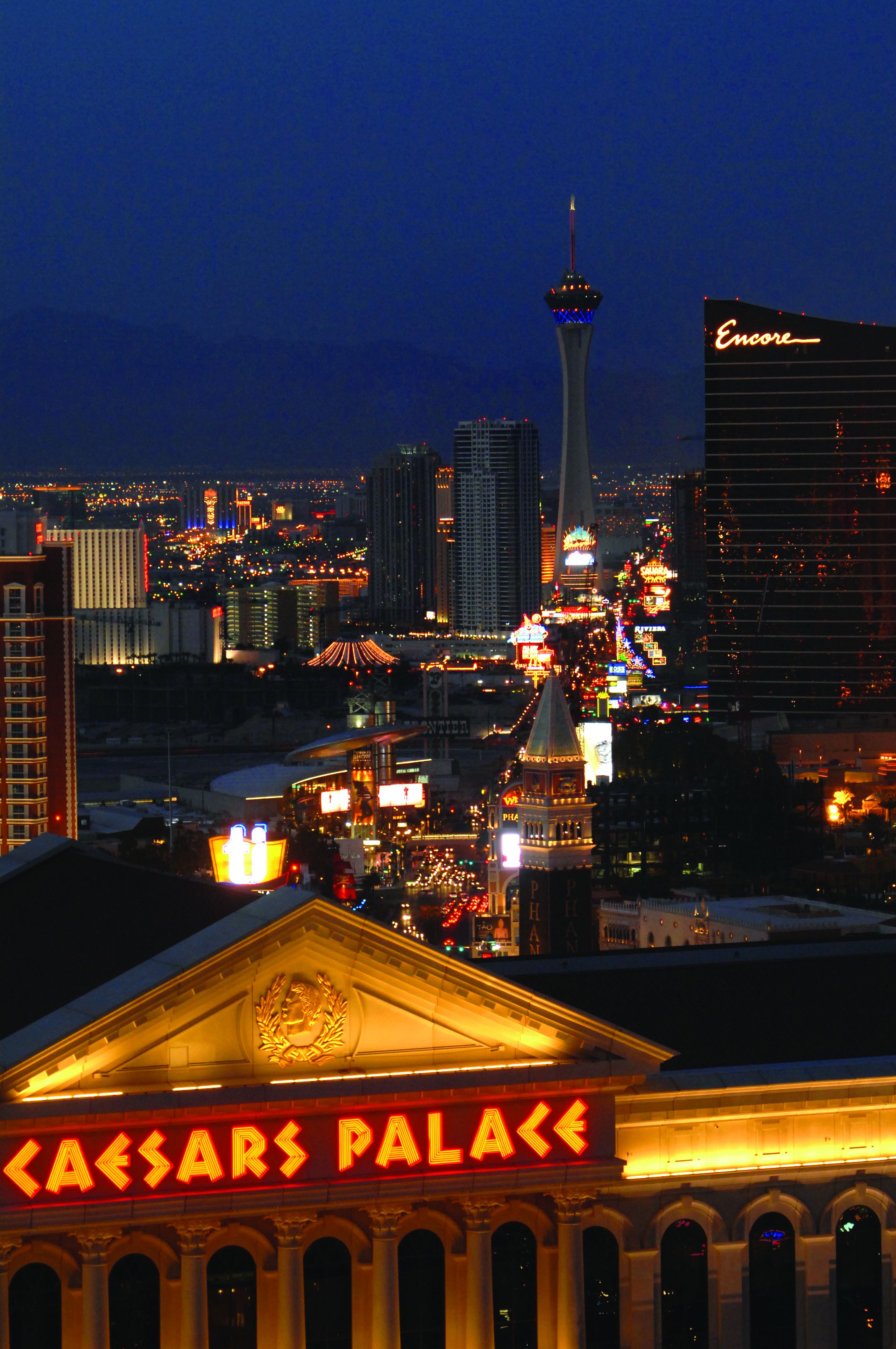
Caesars Palace and the Las Vegas Strip today.
The lecture was part of a course Atwood co-taught at Yale last year in recognition of the 40th anniversary of a famous research and design studio at the university. In 1968, architects Denise Scott Brown and Robert Venturi brought 13 Yale students to the desert to study the architecture of the Las Vegas Strip. It was the first serious examination of the design of Las Vegas, and the resulting book, Learning from Las Vegas, has since become a classic of architectural theory.
For their design studio, Scott Brown and Venturi asked what Las Vegas could teach the rest of the world. Forty years later, Atwood and his co-instructor, architect David Schwarz, asked what the world could teach Las Vegas, looking to contemporary urban design trends—concepts like pedestrian friendly streets, green building, continuous street frontages, and mixed-use, high-density buildings—to propose a new architectural vision for Las Vegas, one that facilitates an increasingly personalized and participatory experience for guests.
Atwood argued that much of the original architecture of Las Vegas, famously described by Scott Brown and Venturi as “decorated sheds,” embodies what he calls the architecture of attraction—buildings designed to capture the fleeting attention of motorists with spectacular signs and elaborate ornamentation.
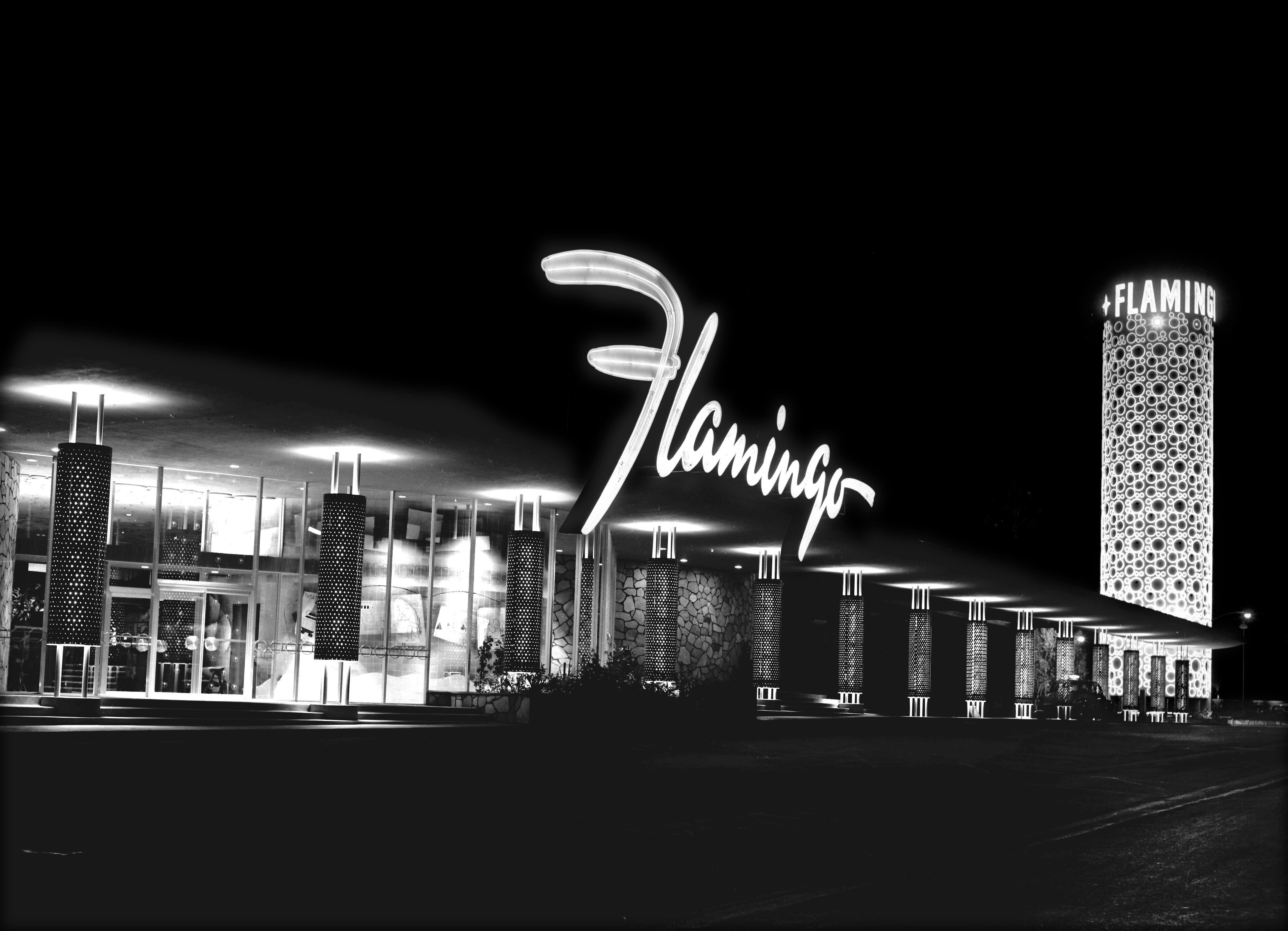
The Flamingo Casino, as it looked in 1953, was the third resort to open on the strip. Harrah's acquired the Flamingo brand with its purchase of Caesars Palace in 2005.
“My perspective is that if you understand why people are doing things, you’ll understand how they came to be,” Atwood explains. “And my view is that people wanted to make money. The big signs weren’t there because people loved big signs. They were there to draw people in and advertise what’s on sale.”
Making money remains the primary function of architecture in Las Vegas, but Atwood says the architecture of attraction is no longer enough. Today’s Las Vegas visitors demand increasingly customized and participatory experiences, and Atwood argues that a new style—an architecture of interaction—will emerge to promote and facilitate those experiences with unique, adaptable spaces that engage guests and reflect their interests. Atwood cites plans for a pedestrian avenue linking Caesars Palace with a proposed Harrah’s sports and entertainment arena as an opportunity to create a new, cutting-edge space that is urban, dynamic, green, customized and experiential.
At first glance, a business executive might sound like an odd choice to teach a course in architecture, but Atwood is no ordinary executive. Prior to his retirement in December 2008, Atwood was responsible for the development, design and construction of hotels and casinos for the world’s largest gaming company, offering him a unique perspective on the intersection of commerce and design.
“When Bob Stern, the dean of the architecture school, called and asked me to be the teacher, I told him I’m not an architect,” recalls Atwood. “He said, ‘That’s why you’d be good in class. These students have only talked to architects. They’ve never talked to the people who hire architects.’
“It was a great class with great students and interesting work for me,” Atwood adds. “In the process of preparing for the class, I wrote my introductory lecture and I guess it was my first opportunity to kind of put it all together into one succinct lecture on how Las Vegas grew up.”
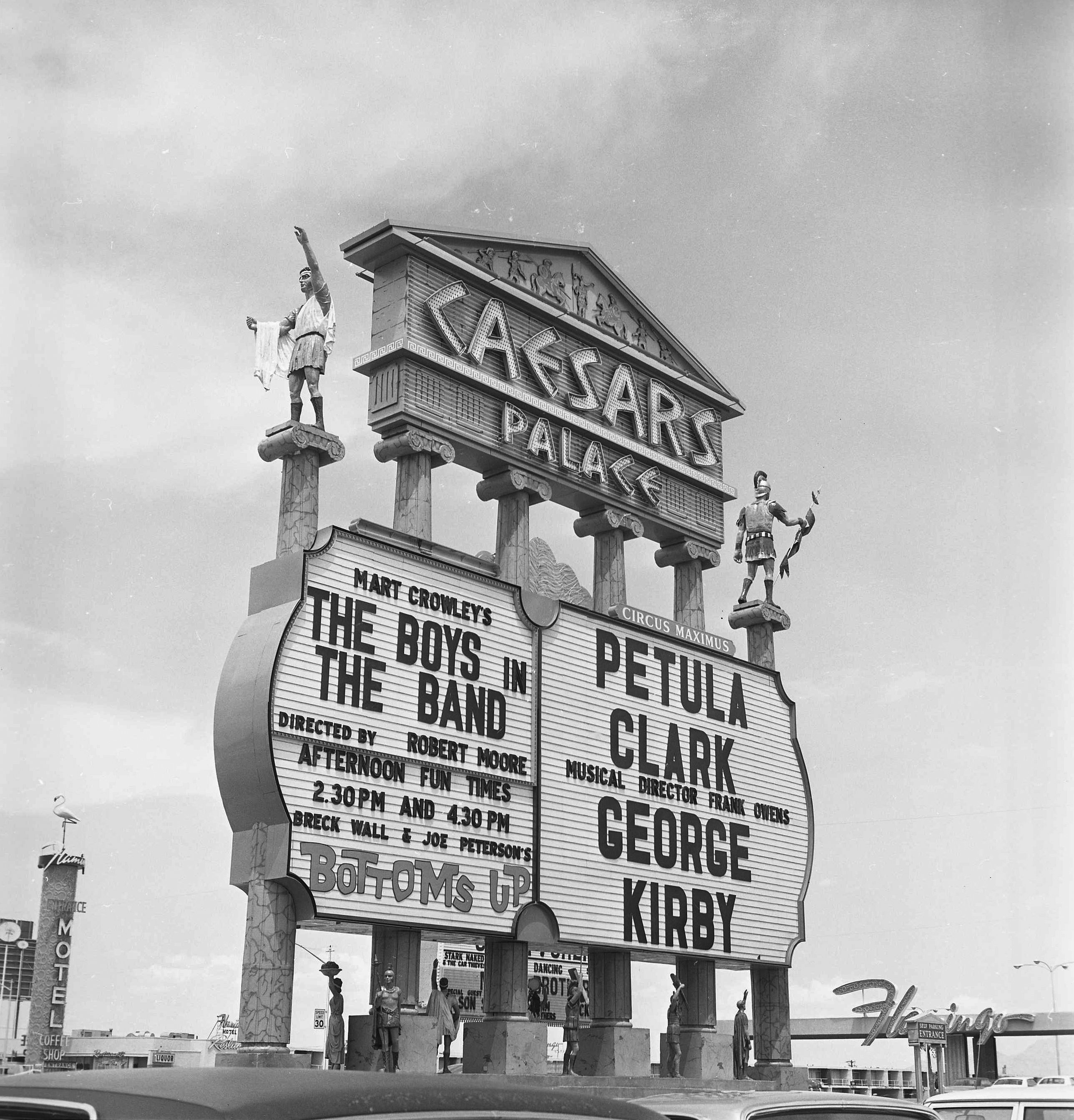
The Caesars Palace marquee from July 1969 epitomizes what Atwood calls "the architecture of attraction."
Atwood knows a thing or two about how Las Vegas grew up, primarily because Harrah’s has played a major role in that development. The company currently owns and operates nine casinos on the Las Vegas Strip—including Harrah’s Las Vegas, Caesars Palace, the Flamingo, Bally’s, Imperial Palace, Rio and Paris Las Vegas.
That’s a far cry from when Atwood joined the parent company of Holiday Inn—the precursor to Harrah’s—in 1979. Back then, the company owned just two casinos, neither of them in Las Vegas. Over the next 30 years and in a variety of management functions and positions—including M&A, investor relations, treasurer and CFO—Atwood played a central role in making Harrah’s a giant in the casino industry. Today, the company operates 40 casinos on three continents and generates annual revenues of over $10 billion.
Just don’t ask the modest, soft-spoken Atwood to take the credit.
“The thing I enjoyed most about my career always was the ability to work with smart people and learn something,” he says. “It’s always been what’s most interesting about it. I credit my bosses with giving me the opportunity to do things that I probably wasn’t the best-qualified person to do. They were willing to take a risk with me. I hope I gave them what they wanted. It was certainly a reward for me.”
The casino business was an unlikely career path for Atwood, mainly because it didn’t exist when Atwood was growing up, or at least not in the way we know it today.
Atwood was born in 1948 in Pascagoula, Miss., the son of a construction worker father and homemaker mother. Pascagoula experienced a population boom during World War II, and Atwood’s father, a welder by trade, moved the family there to work at the Ingalls Shipyard.
“My dad was clear that none of his children were going to follow in his footsteps,” Atwood laughs. “He didn’t want us to have a job like his, where you had to make a living by the strength of your back. He believed you should make a living by the strength of your mind.”
Atwood took that advice to heart. He earned an accounting degree from the University of Southern Mississippi in Hattiesburg and, after graduation, took a job as an auditor and tax preparer with Arthur Andersen in New Orleans. Accounting had come easily to Atwood, but he soon discovered that the work of an entry-level accountant was a far cry from the theoretical concepts he’d enjoyed in college.
“Back then, you spent all day every day working on an adding machine,” Atwood says. “It used to drive me crazy. I found at that point I liked what made accounting work. I didn’t like having to do it.”
Atwood stayed at Andersen long enough to get his CPA and then quit to go back to school for his MBA. He chose Tulane in part because of its proximity to his family in Pascagoula and in part because he simply enjoyed living in New Orleans. He rented a cottage on Walnut Street a few blocks from campus, sang in the Trinity Episcopal Church choir, and worked part-time as a waiter at Victoria Station, a fondly remembered French Quarter restaurant that was housed in a converted train car.
Atwood says he wasn’t a remarkable student, but his experience in the MBA program was a valuable one.
“I didn’t really know what I wanted to do, so I took what probably looked like a bizarre group of classes,” Atwood says. “I wanted to understand what else might be out there. I think it sort of helped me get to where I wanted to go.”
After graduation, Atwood took a job as controller for the Houston division of NEI Corp., a major national homebuilder. Less than two months after starting, Atwood went to the company’s CFO and told him something was wrong. The company was posting large profits, but there was no cash. After going over the company’s books, Atwood discovered the problem was bad accounting: NEI was failing to reconcile its inventory and hadn’t followed a host of basic accounting rules. Atwood made a presentation to the board of directors, and the company was forced to go back and restate previous years’ profits as well as deal with a major liquidity crisis. NEI ended up suing its auditors for malpractice, and the auditors responded by countersuing NEI and Atwood personally. The litigation was ultimately settled, and, for his good work, Atwood was transferred to New York and promoted to special assistant to the chairman.
“God knows why I felt so bold as to take that to the CFO, but I learned a lot,” Atwood says of the experience. “I think you learn more in hard times than you do in easy times.”
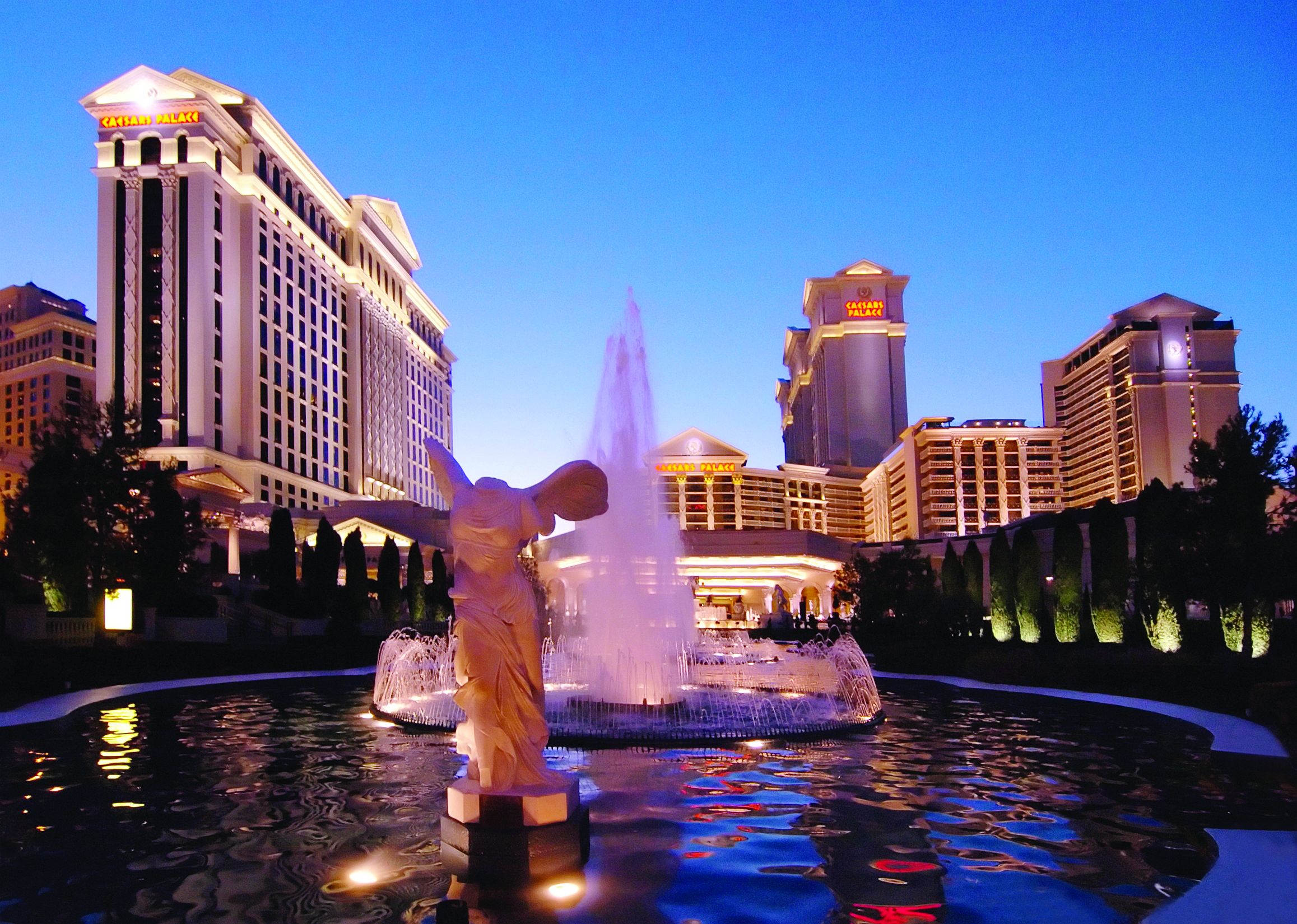
The Caesars Palace Fountains
After two years in New York, Atwood decided it was time for a change and time to get back to New Orleans. He took another job in real estate, this time working for developer Joseph Canizaro as financial controller for Canal Place, the office building, shopping center and hotel complex Canizaro was
building in downtown New Orleans.
Working alongside Canizaro, the legendary New Orleans developer responsible for the Ritz-Carlton Hotel, Texaco Center and the LL&E Tower, Atwood began to realize his professional calling.
“He was doing all the things I’d dreamed of,” Atwood says. “He would build buildings and design them and finance them. I learned so much from Joe.”
After working with Canizaro for a year, Atwood decided it was time for another change. He wanted a job with a big company and Holiday Inns Inc., the Memphis, Tenn.-based parent company of the hotel chain, was looking for a senior financial analyst. Atwood got the job.
Holiday Inns was undergoing a transformation at the time. The 1973 oil crisis hit the hospitality industry hard, and Holiday Inns had responded by diversifying into a host of businesses, including restaurants, cruise ships, nursing homes and insurance companies. One of those acquisitions was Harrah’s Inc., a casino company founded in 1937 and which operated two casinos in Nevada, one in Reno and the other in Lake Tahoe.
“Hilton had just recently gotten into the casino business and so it seemed rational for hotel companies to run casinos, which were in big hotels,” Atwood says.
Atwood worked a few years in M&A, buying and selling businesses for the company, and then moved up to investor relations.
“I went all over the world visiting with investors,” Atwood says of the job. “You’re essentially trying to find investors whose needs will match your plans for the future. There are times when you’re a growth stock, and there are times when you’re a value stock. You try to find the right investment group for the next change of the company.”
Working in investor relations also dramatically elevated Atwood’s role with the company. As the primary link between stockholders and management, Atwood became a critical part of the company’s management team.
“Mike Rose was the CEO at Holiday Inns at the time and because of my job in investor relations, I got to spend a lot of time with him,” Atwood says. “We became good friends, and I learned a lot from it because we’d talk about why we were making this or that play. It was very helpful to have somebody who was interested enough in you and your career to spend the time to help you understand what they were thinking and why they were thinking the way they were. It was just invaluable.”
In 1989, the company—which by then was known as Holiday Corp.—decided to sell off assets to pay down debt from an earlier leveraged buyout. Atwood’s boss at the time, CFO Steve Bollenbach, asked him to find a buyer for the company’s Holiday Inn hotel business. Atwood went out and did just that. In 1990, Holiday Corp. sold its Holiday Inn business to Bass PLC and reorganized its remaining brands—Harrah’s, Embassy Suites, Hampton Inn and Homewood Suites—under a new corporate name, the Promus Companies Inc.
In August 1991, Atwood accompanied Harrah’s executives Michael Rose, Colin Read and Phil Satre on a trip to Davenport, Iowa, to see the Riverboat President, the nation’s first riverboat casino. The visit left a big impression on Atwood as well as the other three executives, each of whom served as boss and mentor to Atwood at various points in his career.
“I had already been asked to form a task force to investigate whether we should get into the riverboat casino business,” says Atwood, who by that time had been promoted to treasurer. “We went up there, saw the operation and on the ride home we all said we don’t need to figure out if we should get into this business. We need to figure out how to get into this business.”
The strategy Harrah’s adopted was simple: Identify locations for riverboat casinos as close as possible to big cities. Chicago, St. Louis, Kansas City, Memphis and New Orleans were all on the list as was Shreveport due to its proximity to Dallas.
In May 1993, less than two years after the trip to Davenport, Harrah’s Joliet—the company’s first riverboat casino—opened just outside Chicago. Within four years, Harrah’s was operating riverboat casinos in each of its desired target markets.
“None of the other big companies were doing riverboat casinos, so we pretty much had it all to ourselves,” Atwood says. “It turned out to be a really wonderful business for us.”
After focusing on growth by expansion into riverboat casinos in the mid-1990s, Harrah’s next turned its attention to acquisitions. Beginning with its purchase of Showboat Inc. in 1998, Harrah’s bought at least one casino company per year for eight straight years, culminating with its $9.3 billion acquisition of Caesars Palace in 2005.
“I think we got better at understanding what value we could add to the assets we were acquiring and therefore how much we could afford to pay,” says Atwood, who was promoted to CFO in 2001. “I think what became clear to us is we could always afford to pay more than anyone else because we could get more out of the assets that were being acquired.”
Harrah’s got more out of those assets by using information as a management tool.
Corporate ownership of casinos was prohibited in Nevada until the late 1970s, but even after the restriction was lifted, clearing the way for corporations to own multiple casinos, the old ways of management persisted. Prior to the 1990s, most of the big Las Vegas casinos were still managed by observation: Managers walked the floor of the casino and made decisions based on what they saw.
Beginning with its expansion into riverboats in the early 1990s, Harrah’s centralized support and administrative functions and designed a system that allowed operations to be managed through information rather than observation.
“It was the opportunity to effectively create a chain of casinos that would have common characteristics that customers would recognize from the brand name,” Atwood explains. “There was a great deal of effort put into building systems around how to institutionalize customer service.”
Harrah’s had collected customer information for years, but the company’s ability to effectively use that information grew exponentially when Gary Loveman joined the company in 1998. At the time, Harrah’s was having trouble maintaining customer loyalty across its many properties, and same-store sales were down at most of its casinos. Loveman, a Harvard Business School professor who specialized in service management, sent a letter to Harrah’s CEO Phil Satre with a few suggestions for how Harrah’s could improve its operations. Satre ended up offering him the job of chief operating officer. When Satre retired five years later, Loveman became CEO.
“We had the capacity because of our hotel base to build a customer information system, but we didn’t have the people to know how you managed with that information,” Atwood says. “I think that’s what Gary’s done. He’s taken the company to a level that was unheard of before he came.”
One of Loveman’s biggest innovations at Harrah’s was Total Rewards, the industry’s first tiered customer loyalty program. Satre had introduced a loyalty card in 1997, but it hadn’t met its full potential in attracting new customers. Loveman suspected that the casino industry’s practice of focusing on high rollers ignored a large, loyal base of middle-class customers. In 2000, Harrah’s rolled out a new three-tiered program that awarded perks and comps to customers based on their level of play and encouraged them to spend more to achieve progressively greater levels of perks.
“One of the things that’s interesting about casinos is they’ve always discriminated service,” Atwood says. “If you’re a better customer, you get a better level of service. And people don’t object to that. They understand that I’m paying for this, that’s why I’m getting it. It’s a good, easy-to-understand value proposition, but I think what Harrah’s did was just make it work better.”
By using information gathered almost exclusively through Total Rewards card use, Harrah’s was able to assemble a centralized data warehouse and build predictive models to identify which customers to target with incentive programs. As a result, Harrah’s has led the industry in profits as a percentage of revenues.
In August 2005, Hurricane Katrina severely damaged Harrah’s casinos in New Orleans, Gulfport and Biloxi, forcing the closure of all three properties, but for Atwood, the tragedy was more personal. His 92-year-old mother’s home in Pascagoula was destroyed by the storm.
While the devastation was severe and the financial impact great, the company’s response to the storm represents one of Atwood’s proudest moments at Harrah’s.
“When times are tough, the true spirit of people comes out, and right away all our employees were very anxious to know what they could do to help,” says Atwood, who also served as chairman of Harrah’s Foundation. “We raised a lot of money for our employees who were affected by the storm, but we also did a lot of other things.”
Within days of the storm, Harrah’s employees repaired a company office building in Gulfport to serve as a storm relief center, offering free meals, clothing and health care to victims of the storm. In New Orleans, the company offered assistance to displaced employees and found some of them work at other Harrah’s properties, but perhaps even more importantly, the company resumed construction on a hotel project and began repairing the shuttered downtown casino almost immediately. The reopening of Harrah’s New Orleans in February 2006—just in time for Mardi Gras—was a powerful symbol of the city’s resilience and determination to rebuild.
With its strong cash flow and resistance to recession, Harrah’s was a natural target for private equity firms. In 2006, Harrah’s began talks with Texas Pacific Group and Apollo Global Management, two large private equity firms, about the possibility of a buyout. In December of that year, after intense negotiations, the three parties agreed to terms. In April 2007, Harrah’s shareholders approved a plan that would pay them $90 in cash for each share. On Jan. 28, 2008, Texas Pacific Group and Apollo Global Management completed the acquisition, and Harrah’s became a private company. The $17.1 billion deal was the world’s largest casino buyout.
Around that time, Atwood went to Loveman and told him he had decided it was time to retire, but Loveman convinced him to stay on to help with the transition. Atwood agreed, but with the stipulation that he would stay no longer than three years and less if possible. Then the credit crunch hit and the company’s big design and construction projects—the projects Atwood specialized in—were put on hold.
“I went to Gary and said all the things I wanted to do, I’m not doing,” Atwood says. “We’re laying off people and trying to save money and I’m a very expensive person to have. We ought to lay me off.”
On Dec. 19, 2008, Atwood resigned as vice chairman and removed himself from company’s board of directors, ending his long, remarkable career with the gaming giant.
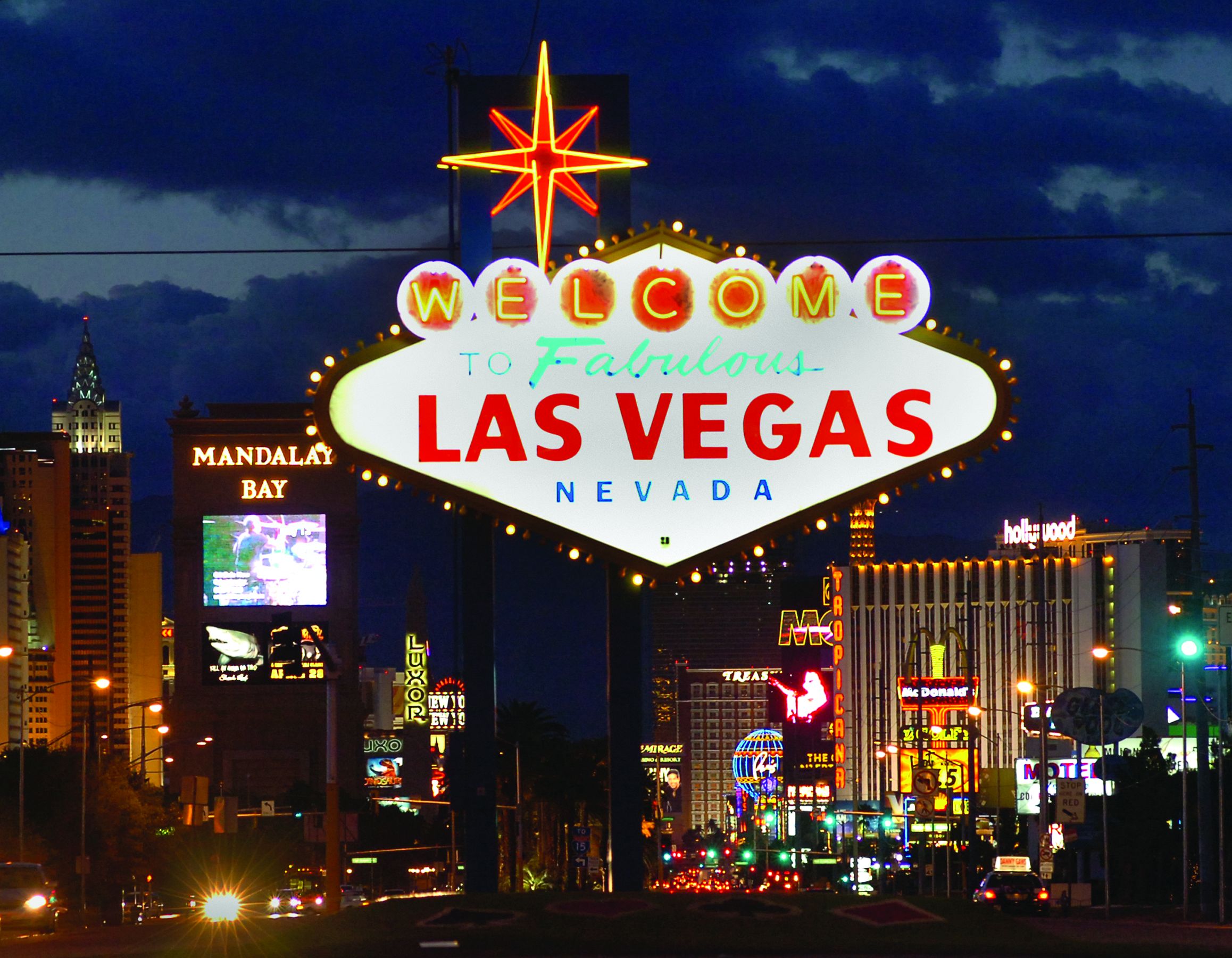
The Las Vegas strip as it looks today
Atwood continues to serve on the board of Equity Residential, a Chicago-based real estate investment trust, but he spends most of his time these days on philanthropic work.
He serves on the board of the Las Vegas Chamber of Commerce and on the Dean’s Advisory Board of the University of Nevada–Las Vegas Business School. Since his retirement he’s devoted himself to the effort to build a major performing arts center in Las Vegas. When the $475 million Smith Center for the Performing Arts opens in 2011, it will be the first comprehensive arts center for a city that prides itself in offering residents and visitors alike the best of everything.
“Las Vegas is the largest city in the United States that doesn’t have a world-class performing arts center, so we just went out and started raising money to do it,” says Atwood, who serves on the center’s board of directors. “It’s been quite an accomplishment.”
Today, the fit and youthful-looking Atwood, who turned 60 in December, is happy to use his business skills solely for philanthropic purposes.
“I get to work on the things I want to work on, things I had to make time for in the past,” he says. “Now I get to spend as much time on them as I want.”
One thing Atwood hasn’t been spending much time on is gambling.
“When you’re in the business, it takes away some of the fun because you notice too many things,” he laughs. “You end up focusing on things like whether or not the cocktail service is slow. Maybe once I get away from it, it’ll be more fun to go back and just play.”


